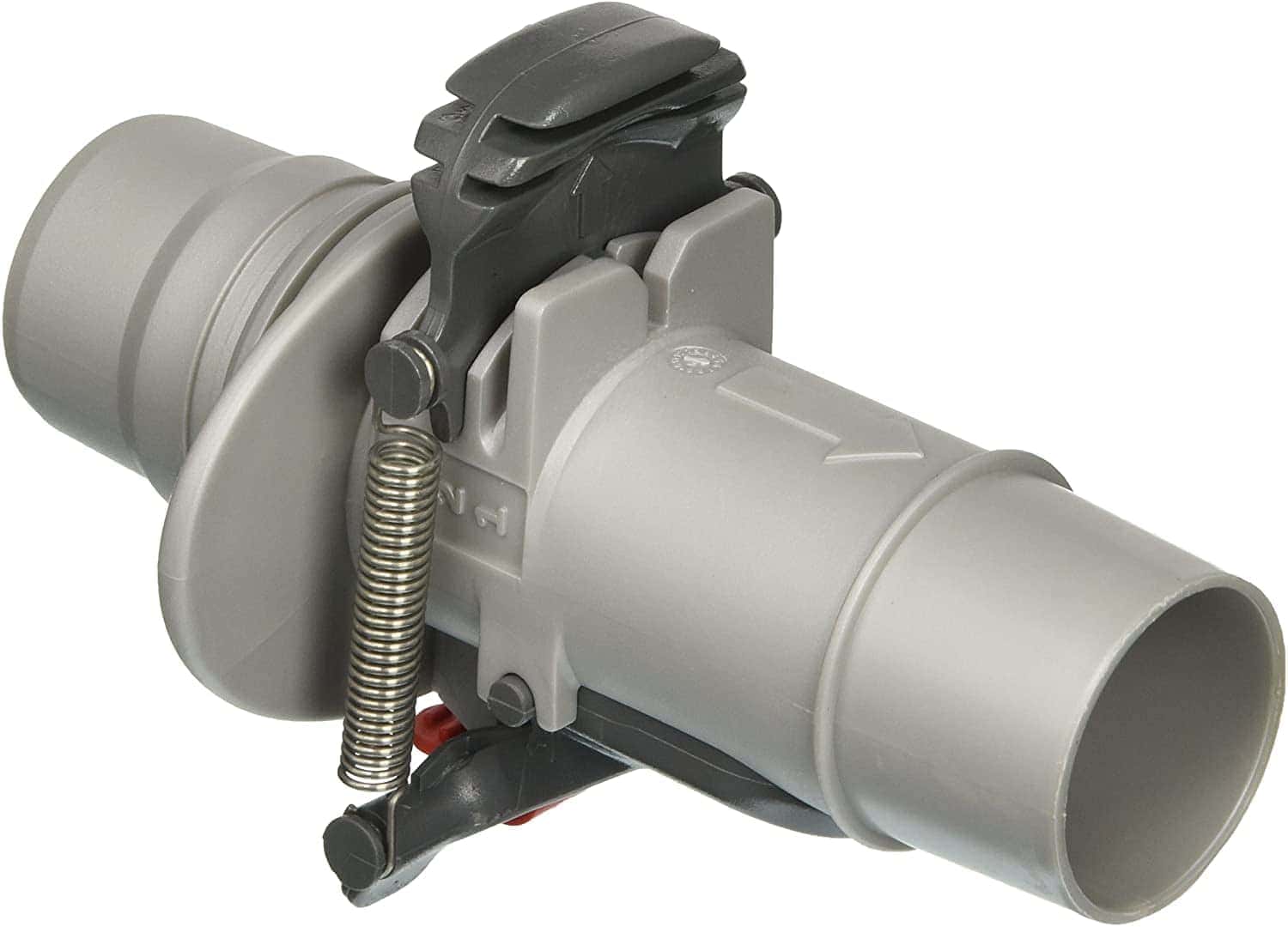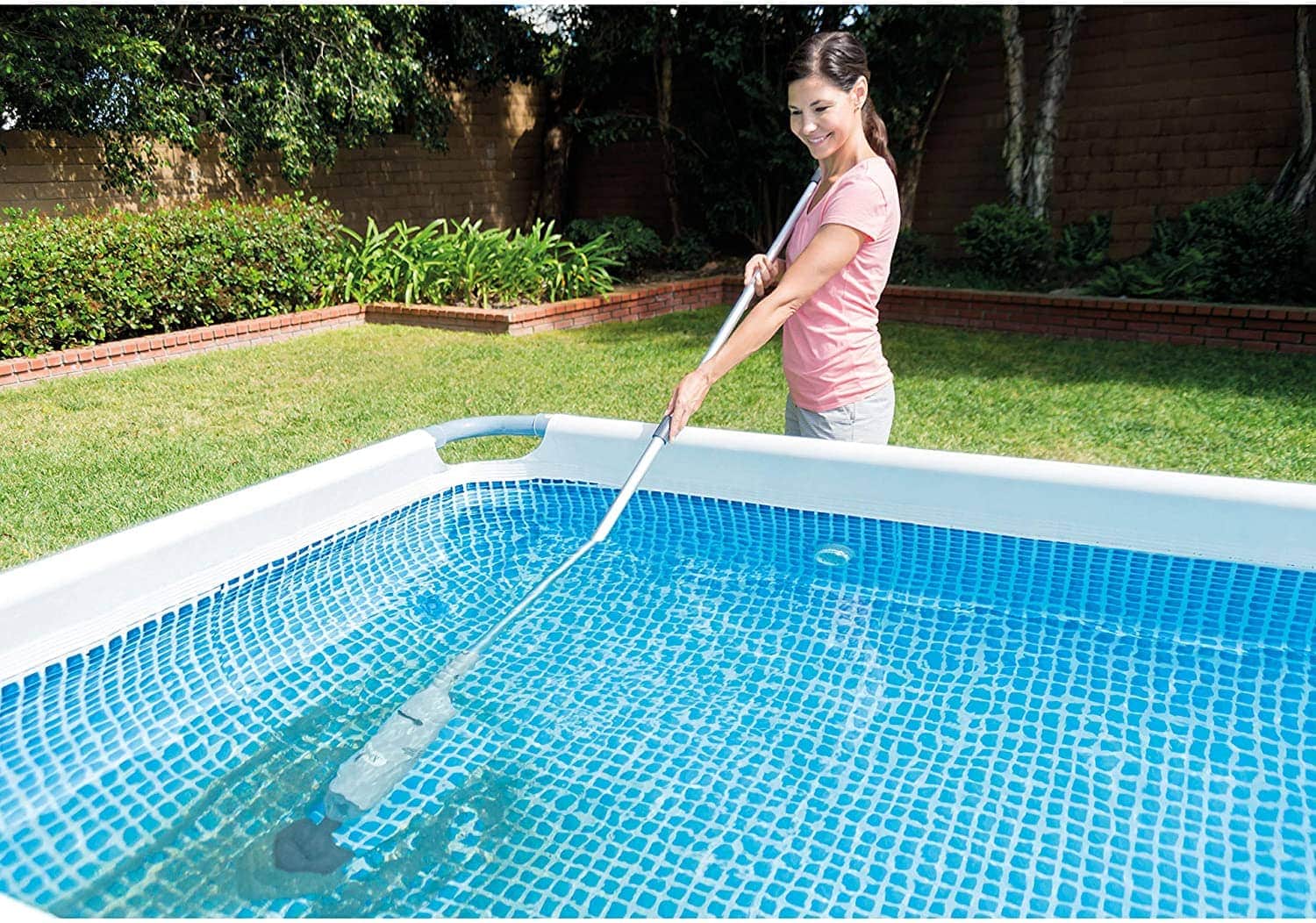How to Prevent Your Pool Cleaner from Getting Stuck
-

- Last updated:


Cleaning your swimming pool is a never-ending task that has to be done regularly. The cleaner works by suction just like a regular vacuum cleaner, but instead of sucking in air, it sucks in water. A strainer catches all the debris, and the water is recirculated. Now and then, the suction will become too strong, and the cleaner will get stuck to the bottom of your swimming pool. Below, we’ll explain how you can prevent that from happening.

If you’re using an Automatic Pool Cleaner
The 2 Steps:
Often, you won’t know there is a problem until you come back to the pool after it has been running for several hours, only to discover the pool hasn’t been cleaned at all because the cleaner is stuck in one place. You don’t have any direct control over the cleaner head during its operation, so you’ll have to find another solution:
- We recommend that you start by searching on Google if there are other people with the same pool cleaner model who had the same problem. It’s not unlikely that you’ll stumble upon YouTube videos where they show how they fixed their problem or forum discussions where you can find a fix by reading comments
- If method 1 does not work, you can keep reading this article or ask the manufacturer for advice.
Flow Adjustment
To prevent the cleaner from getting stuck in the first place, you’ll have to adjust the suction by controlling the water flow through it. The stronger the water flow, the more likely it is to get stuck in one place. The cleaner must maintain the suction, or the pool won’t get cleaned properly. The easiest solution is a flowkeeper valve.
Here’s an example of what a flowkeeper valve looks like:
A flowkeeper valve regulates the flow of water through the hose going to the cleaner. It can’t attach directly to the skimmer on the side of the pool, so you’ll need an additional, short piece of hose.
The short hose attaches to the skimmer port. You then attach the flowkeeper valve to it and the longer hose to the other end of the flowkeeper valve. The other end of the long hose attaches to the cleaner.
The flowkeeper valve has a spring-loaded valve that can be set to open and close, so it sucks in some water at the valve, thus reducing the amount of water being sucked in through the cleaner. This reduces the suction at the cleaner head and prevents it from getting stuck. The flowkeeper valve can also be used on a manual cleaner, particularly if you’re using a long, telescoping rod.
Main Drain
Above-ground pools don’t have a main drain on the bottom, but in-ground pools do. This is another area where automatic cleaners are prone to get stuck. The central drain has suction pulling water through it, and the cleaner has its own suction. When they come in contact, the combined suction can trap the cleaner.
The easiest and least expensive solution to this problem is to turn off the main drain while your Automatic Pool Cleaners are working. Alternatively, you can adjust the main drain pressure by locating the controls at the pump. The main drain should have a lever on the pipe allowing you to close it entirely or partially close it, which will reduce the suction.
The drain will still work whether the cleaner is operating, and once you’ve found the correct setting that prevents your cleaner from getting stuck when it goes over it, you can leave it there. You’ll probably have to experiment with it a little since all pools and pumps are different, but your work is done once you’ve found the correct setting.
If You’re Using a Manual Pool Cleaner:
If you’re using a manual cleaner, you have a great deal of control over the cleaner head, especially if you’re using a short pole in the water. You can feel when the cleaner is trying to stick to the bottom of the pool and adjust the way you’re holding the pole and positioning the head moment by moment as you move it along. You can adjust the angle at which the head contacts the bottom of the pool, holding one edge of it just slightly off the bottom to prevent the suction from getting it stuck.
If you’re standing on the deck using a long pole, it can get a bit trickier. Long telescoping poles have a deplorable tendency to bend, bow, and flex uncontrollably when you’re pushing the cleaner or trying to sweep it side-to-side across the pool. Under those conditions, it is nearly impossible to tilt the head the way you can with a short pole. If the suction is too strong, pushing the cleaner with a long pole virtually guarantees it will get stuck. Pulling the cleaner with a long pole isn’t as problematic, but it is still challenging. You just don’t have the control you have with a short pole.

Conclusion
Although you still need to clean your pool manually, your automatic cleaner saves you time and effort. They are effective devices but can easily get stuck when moving over the primary drain. Pool owners use several types of automatic cleaners, but generally, adjusting the suction on the unit or the pool can keep them moving. We hope this article helps you adjust your cleaner so that it can go back to vacuuming up the leaves, dirt, and dead insects in your pool.
News from the blog:
- How should you winterize your in-ground pool?
- Which variable-speed pool pump is our all-time favorite and why?
Contents


